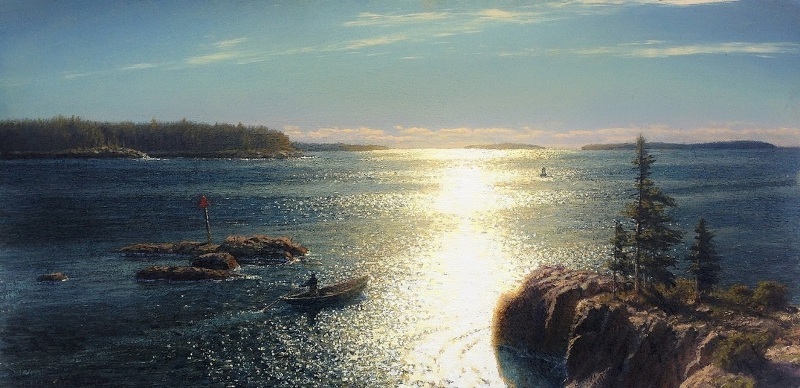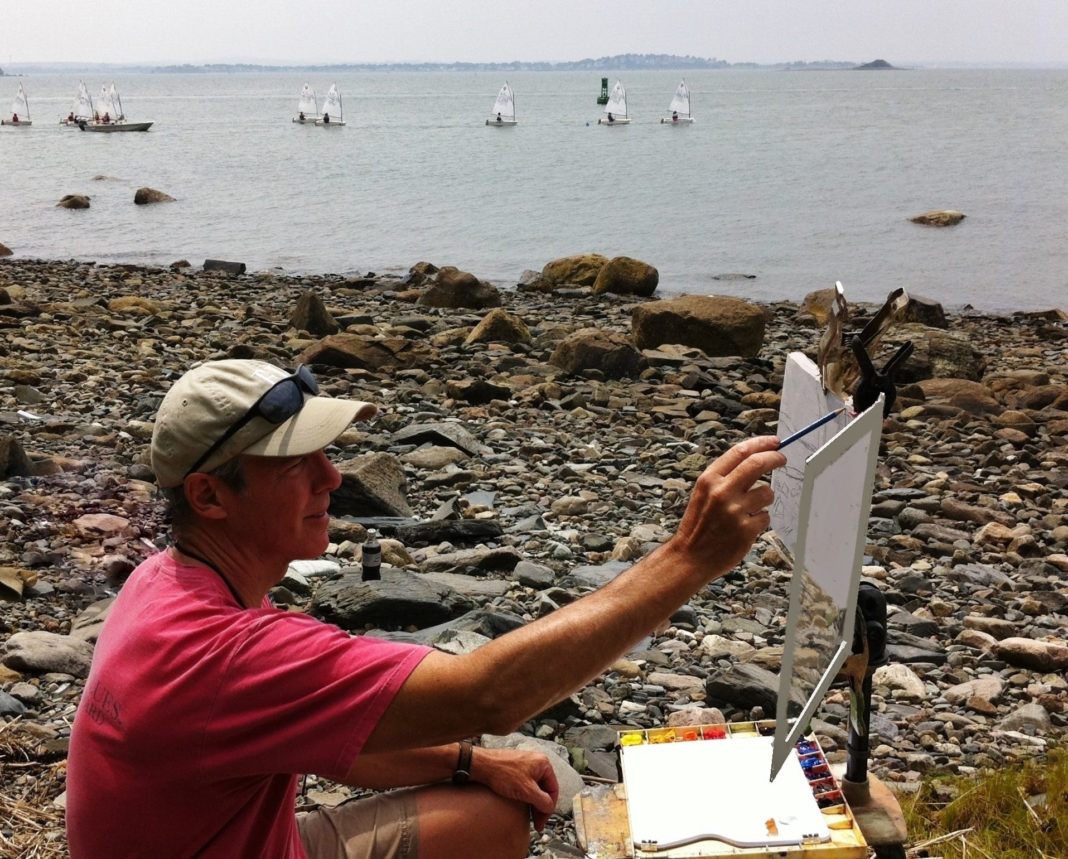Life as an Artist > Joseph McGurl shares five secret practices that might seem off-the-wall to others, but have become completely normal for him.
Life as an Artist: You Know You’re An Artist When …
By Joseph McGurl
(“Painting Light & Atmosphere”)
1. Unusual Tools of the Trade
When I first started painting, I used fairly conventional tools: brushes and a palette knife. As I progressed, it was necessary to find additional ways to apply the paint that would correspond to what I was envisioning. As a landscape painter, there are many textures, shapes, and edges to the subject. I found that using conventional tools didn’t give enough variety and fidelity to match what I was seeing.
My father was a decorative painter and muralist. He was my best teacher; I worked with him all through my school years, and saw how he used different tools to achieve the desired effect. For instance, he did a lot of marbelizing and used a seagull feather to create the veining. I realized that was an effect that could also work for cirrus clouds, so I added feathers to my paintbox.
Some of the other tools I use are rubber nibs – also called color shapers – sponges, a check roller, brayers, the back end of my brush, my fingers, squeegees, dental picks, paper towels, a toothbrush, taping knife, sandpaper, foam pads, and steel wool. With these tools, I can create a much more interesting and varied paint quality.
2. Mirror Check
In the studio, I paint for periods of time with the picture upside down. This helps to see the design of the painting without getting distracted by the objects I’m depicting. I also frequently look in a mirror to see what I am painting.
As we paint, our eyes adjust to the shapes we are making, and it all looks fine. But if we look into a mirror, we see the image with a fresh eye and mistakes jump out. We can then make adjustments.
For instance, I was recently painting some trees. They looked fine, but when I looked at the painting in the mirror, I noticed there was a peace sign made by the shadow of the foliage and branches that I hadn’t seen by looking straight at the painting. By viewing the painting in reverse, we may see mistakes more easily.
3. Multiple Types of Lighting
I use various lighting in the studio. The three types I use are daylight, halogen, and fluorescent. I frequently change the lighting to see how the painting looks under warm, cool, bright, and dim lighting. This is important because the lighting may be different in another setting, and my goal is to make the painting look good in various lighting conditions.

4. It’s Okay to Have Sand On Your …
While planning a painting, I also think about the textures I want to incorporate. Adding sand, glass beads, or thickened acrylic gel to the underpainting gives a unique texture that visually corresponds with that found in nature. If a glaze is applied, texture is more pronounced. I have also sifted sand on a wet gesso surface of a sandy beach painting forming the color and texture of the beach.
5. Find Ways to Move
They say sitting for long hours – which I do while painting – is very bad for our health, so a little movement helps. I had to customize my easel to make it work, but I have a pedal bike under my stool and often use it while I paint. Previously, I used a treadmill specifically designed for walking, but I think I get more benefit from the pedals.
In the Joseph McGurl combo set, get 25 hours of in-depth instruction with techniques including how to upsize a small painting to a massive studio painting, create a proper underpainting, where and when to use texture, paint shimmering, lifelike water, and more.
Visit EricRhoads.com to find out all the amazing opportunities for artists through Streamline Publishing, including:
– Online art conferences such as Plein Air Live
– New video workshops for artists
– Incredible art retreats
– Educational and fun art conventions, and much more.
> Subscribe to Plein Air Today, a free newsletter for artists
> Subscribe to PleinAir Magazine so you never miss an issue





